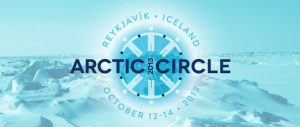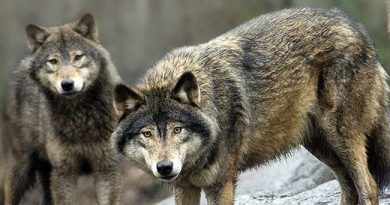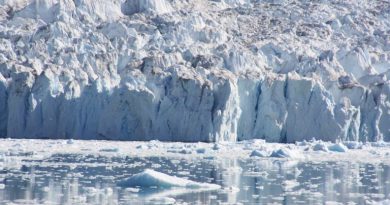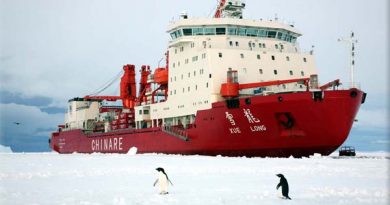Iceland president says Arctic lacks ‘effective governance’; launches Arctic Circle

In a subtle swipe at the Arctic Council, Icelandic President Ólafur Ragnar Grímsson criticized, “The Arctic has suffered from a lack of global awareness and, as a result, a lack of effective governance.” Ostensibly believing that the Arctic Council is inadequate, Grímsson launched the possibly rival Arctic Circle in Washington, D.C earlier this month. ” The formation of this new organization, a non-profit, comes on the heels of a free trade agreement signed between China and Iceland in April, too. The Arctic Circle creates the potential for a forum in which the Asian states are included on a level playing field with the Arctic states, which will be particularly important if their applications for permanent observer status are denied. The opening of the Arctic Circle thus provides an outlet for the Asian states to discuss polar affairs with Arctic states in a forum where they still have arguably more power than in, say, the International Maritime Organization, where northern countries’ hold on the conversation could really weaken. Yet I think that the launch of the Arctic Circle could actually spur Arctic Council member states to approve the Asian states’ applications for permanent observer status in order to circumvent the possibility of a powerful Arctic governance forum in which resentful, excluded Asian states are discussing polar affairs.
At a National Press Club luncheon, Grímsson stated, “The aim of the Arctic Circle is to strengthen the policymaking process by bringing together as many Arctic and international players as possible under one large ‘open tent.’” That open tent will include participants from all over the world: “institutional and governmental representatives, political and policy leaders, scientists and experts, activists, and indigenous people from the Arctic countries, as well as Asia, Europe and other parts of the world,” Grímsson stated. The more informal and inclusive nature of the Arctic Circle distinguishes it from the region’s premier intergovernmental body, the Arctic Council. It’s also a non-profit organization that will be supported by private donations and corporate sponsorships. It will be interesting to see whether the state of China will join or if representatives from national science bureaus and other types of organizations will instead, since the Circle’s arrangement is rather unique.
I find it difficult to see how the Arctic Circle would significantly impact governance in the circumpolar north because the Arctic Council has already more or less established itself as the 800 pound gorilla in the Arctic. Other organizations such as the IMO and United Nations certainly have some influence over what happens up north. Yet the Arctic Council has cemented its place as the main forum for northern cooperation in recent years, particularly since the signing of the Search and Rescue Agreement in 2011. While the Arctic Circle might be able to make recommendations, it’s hard to see how it could ever pass anything binding, particularly when the Arctic Council, which has actual states as its members, still has not done so. But perhaps the Arctic Circle will still be able to push governance forward in a novel way.
First of all, states without territory in the Arctic, such as China and Singapore, would be on equal footing with states with actual Arctic territory, such as Norway and the United States. More than that, however, the state itself might no longer be the primary unit of power in the Arctic Circle. As Gerhardt, Steinberg, Tasch, Fabiano & Shields wrote in a paper in 2010, ”The Arctic has never fit well within the spatial template of the state system, which is based on a foundational, permanent distinction between enclosable land and free-flowing water. Today, climate change is bringing this divergence, which long had been at the margins of political consciousness, to the core, in Arctic states and beyond.” The Arctic Circle brings into question the importance of the materiality of territoriality as states far from the region, like Singapore, are accorded an equal amount of legitimacy as states with huge borders and vast amounts of land, water, and ice in the north, like Canada and Russia. The non-profit’s mission is to “facilitate dialogue and build relationships to confront the Arctic’s greatest challenges.” Contrast this with the mission of the Arctic Council, which was established in 1996 by the Ottawa Declaration as a high-level forum to “provide a means for promoting cooperation, coordination and interaction among the Arctic States, with the involvement of the Arctic indigenous communities and other Arctic inhabitants on common arctic issues, in particular issues of sustainable development and environmental protection in the Arctic.” The Arctic Council separated the “interaction” of the Arctic States from the more peripheral “involvement” of Arctic indigenous communities. It also excluded non-Arctic states from interaction, limiting them to the even more peripheral position of permanent and ad hoc observers.
While the Arctic Circle may be opening up new frontiers in Arctic collaboration and possibly even governance, its website seems to be rehashing somewhat inaccurate visions of the north. The website’s mission statement reads, “By facilitating circumpolar meetings of leaders across disciplines, we will identify truly sustainable development practices for the Arctic, the world’s last pristine environment.” First of all, the concept of “sustainable development” means that the development, or production and consumption, of a region’s resources is inevitable. Conserving the region in its present state and putting a moratorium on any and all development is unthinkable today, which is ironic given that not too many years ago, people were calling for an Arctic park. Second, the Arctic is far from being the world’s last pristine environment, if such a place even exists. Human presence has altered the Arctic for thousands of years, through activities such as indigenous hunting, medieval Icelandic forestry, French fur trappers and Soviet nuclear submarines. Oil and gas exploration and drilling have also been ongoing for decades. These are some of the very influences that have affected the Arctic ecosystem(s). Reinforcement of the “pristine Arctic environment” trope can be problematic for indigenous peoples and residents of the north. Political ecology perspectives reveal that in the Americas, the myth of the pristine environment assisted colonization’s marginalization and disenfranchisement of indigenous peoples and northern residents (Robbins, 2012, p. 99). If the Arctic Circle fails to see past the fact that the Arctic is actually not a pristine environment, then it could end up treating indigenous peoples and northern residents as marginal and inconsequential.
The Arctic Circle’s first meeting will be held Oct. 12-14 in Reykjavik, Iceland. Meanwhile, Arctic Council representatives are gearing up for their ministerial meeting in Kiruna, Sweden next month. I used to be a political cartoonist as an undergraduate for UCLA’s student newspaper, the Daily Bruin. Picking up my old tools of the trade, I drew a little cartoon below illustrating what might be going on in the Council’s back rooms.




